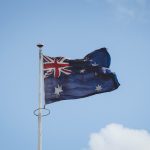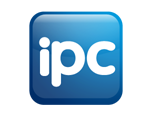Adventures in Atlantic City

Mike Barraclough (7 June 1943 – 1 October 2022) was a long-serving staff member at TCG, one of Australia’s oldest information technology firms. Open Forum is proud to publish a series of extracts from his unfinished memoir as a tribute to him and his work in the domestic computer sector.
The fourth excerpt from Mike Barraclough’s memoirs recalls his eventful trip to Atlantic City in the early 1980s and the decade’s technological transformation of the newspaper industry.
The ANPA used to be the big show for newspapers in the USA, and back in 1981, it was held in Atlantic City in New Jersey. Hendrix were putting in a big display, and I was encouraged to attend – given trips by several other Australians and Kiwis – and make sure I packed a three-piece suit – unlike today’s more casual dress code.
Atlantic City is certainly is an “interesting” place, as it set itself to be the East Coast equivalent of Las Vegas. It’s essentially a long, wide boardwalk overlooking what Australians would call a less than perfect beach and the grey North Atlantic Ocean. The “glory” of Atlantic City lies in its glittering casinos and the towering hotels which service them. Not least of these were the “glorious” Trump casinos, one of which – the Taj Mahal – the always understated Donald Trump declared to be the eighth wonder of the world.
They were, of course, all financed by junk bonds and instruments for organised crime. The Taj Mahal itself was eventually slapped with a $10 million fine for money-laundering cash for Russian mobsters and plunged into bankruptcy, along with Trump’s other two casinos. The boardwalks casinos failed because they coveted an influx of high rollers from New York but only managed to attract little ol’ ladies with blue rinsed hair who were bused in from New Jersey and New York clutching $10 complimentary chips.
This could hardly generate the million dollars a day Mr Trump required to pay the debt on the Taj Mahal. Truth is, if you had money and wanted to gamble and have sun and fun on the side, you went to Las Vegas. At least that way you could brag you were able to afford more than the bus fare to Atlantic City. Behind the thin veneer of the boardwalk and the flashy new hotels lay a derelict town well past its glory days of prohibition in the 1920s. Indeed, when I asked a cab driver to take me to a laundromat on Arctic Avenue – as directed by the hotel since they had no laundry service – the cabby refused, saying it was too dangerous up there.
As with everything in America, the convention centre was huge. Hastech – as Hendrix now called itself – had its own big booth, with a kind of annex specifically set up for international visitors sporting a painted map of the world as a backdrop. There was only one small issue – God bless the Americans – they missed out New Zealand from the map, the country from where one of our best prospects was arriving. And yes, he did point it out.
But the stand was great, the equipment was demonstrated, and it all looked very slick and polished for its time. All of us were dressed in our suits, and our Kiwi visitor was suitably impressed when we watched a page being laid out on the screen, advertisements and all, with headlines and the news copy then added.
However, we learned a lesson there and then, when there was too much news copy for the page to hold. The editor solved the problem by resizing the adverts down, but this took the gathered managers aback, as a paper exists to serve paid adverts to the reader at the behest of paying companies, with the news copy merely the bait rather than the product. The advert is what paid for the paper, and the advertiser would be up in arms if he did not get exactly the space for which he paid.
I noticed a few shakes of heads and people exiting, and learned another lesson in the need to really must know your industry. Technically, the demonstration was a great success and showed the flexibility of the new system – but it could have cost someone their job in a real environment. Despite that hiccup, the reception was otherwise good, the Australians were impressed, and and we agreed to go visit Hastech’s prime site at US Today – the paper invariably slipped under your hotel door – in White Plains in upper New York State.
USA Today had a massive circulation, as the only national paper in a country where newpapers remain city-based, but for that reason it also lacked one major feature of Australian city papers – the the “Rivers of Gold” of the classified ads. For those that can remember, The Sydney Morning Herald and its ilk once made their money from major swathes of classified ads offering jobs, cars and property in the days before the internet. These sections easily outnumbered the news in terms of page numbers, and have all but disappeared today, replaced by online portals.
This was another big lesson learnt. Hastech’s page layout system was not geared to classified ads, but the Australian papers were looking for a solution to take the manual labour out of producing these very ads, as they generated most of its revenue, but also devoured manhours to produce.
Although we had a great page layout system, the Australian newspaper companies wanted to alleviate the problems of the “classies”. Hendrix had been ahead of its time, but our competitors were already focusing on collation and layout of classified ads.
Up against Atex
Other companies such as Atex and CSI had not overtaken Hastech in terms of technology, but had already sidestepped them in the USA. They were installing large systems at prestigious titles such as The New York Times, Boston Globe and Chicago Daily News, which offered a “non-stop” system that gave newspaper proprietors a feeling of security.
However primitive they appear by today’s standards, we realised the workflow solutions offered by Atex and CSI would herald a revolution of the newspaper business. The Hastech system we had would never crack the large newspapers and magazine publishers, while niche magazines and regional papers were even then struggling to survive and could never afford it.
We were therefore stuck with an expensive demo system and little prospect of a sale. The residual hardware was of little intrinsic value compared to the software, so even a sale of scrap would have produced scant revenue. Fortunately, at our lowest ebb, we enjoyed another stroke of luck when I met the South African distributor of the Hendrix system. He’d been thwarted by a ban of US technology to the apartheid state, but Australia wasn’t under such export control.
Our demo system was therefore quickly dispatched to South Africa, being installed at the Daily Dispatch, a venerable newspaper founded in 1876 in East London. There it lasted another decade before being replaced by a Quark system, and the paper is still going strong to this day. The company formerly known as Hendrix was eventually incorporated into Crossfield, a British behemoth in the print industry.
In the early 1980s, the world of computing was being revolutionised far beyond the newspaper industry. Just as chips had replaced components in the first computer revolution, the PC became ubiquitous and upended the long-standing mainframe computer companies such as DEC and Data General, on which the Hastech software had lived.
The experience taught us another important lesson. While technology is important, the detailed knowledge of the application specialist is key. If we had hired one of those, they would have seen that Hastech’s technologically advanced system was not yet commercially suitable for the Australian market, given its lack of classified layout applications and limitations in larger user sites. We should have done our research, nevertheless we did sell two systems, and had a lot of lunches on the way.
Another chapter closed, but we still had other options, so onwards and upwards as they say.
Open Forum is a policy discussion website produced by Global Access Partners – Australia’s Institute for Active Policy. We welcome contributions and invite you to submit a blog to the editor and follow us on Twitter, Facebook, Linkedin and Mastadon.













